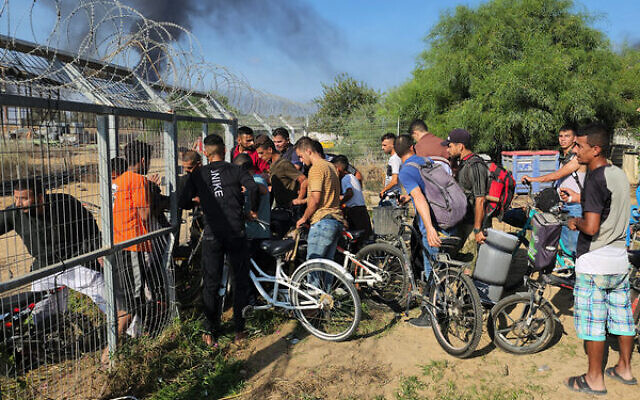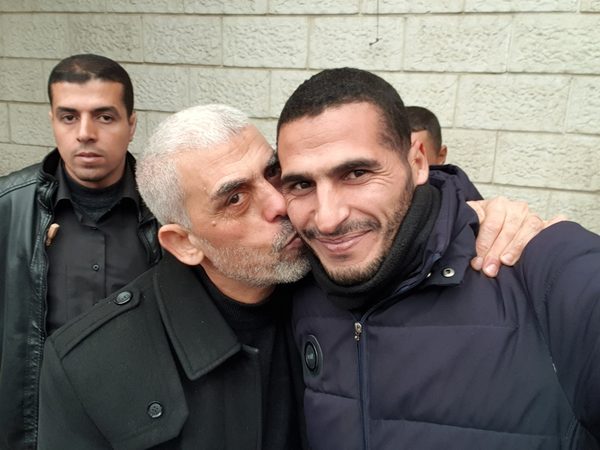Call for clarification from Global Media Photographers
Israel demands clarification from global media Agency photographers present at Hamas assault.

(TIMES OF ISRAEL) Israel last Thursday demanded that international media outlets explain the circumstances under which photographers in their pay were present at the scene of the surprise October 7 assault by the Hamas terror group on southern Israel, and warned they could be held complicit in the crimes.
The move came after the pro-Israel watchdog group Honest Reporting published a report showing that photographers used by The Associated Press, Reuters, The New York Times, and CNN provided images taken as the attack was ongoing from the border area and including from inside Israel — intimating they may have had advance knowledge of the assault.
The report also raised questions about the relationship between some of the photographers and the Hamas terror group that rules Gaza.
AP, Reuters and The New York Times all denied having any prior knowledge of the attack and reiterated that their role is to cover breaking news events. AP and CNN said Thursday that they would no longer work with Hassan Eslaiah, one of the photographers named.
The National Information System, a department of the Prime Minister’s Office, said in a statement on Thursday that it “takes very seriously the phenomenon of journalists working with international media joining [with attackers] to cover the brutal massacres by Hamas terrorists on Saturday 10/7/2023 in the communities surrounding Gaza.”
It said the Government Press Office “issued an urgent letter to the heads of the media systems where these photographers are employed, and asked for clarification on the matter.”
Still, without receiving answers, it concluded that: “These media people are complicit in crimes against humanity.”
“This is a violation of the rules of professional ethics,” the statement said. “The National Information System demands that immediate action be taken.”

It added that freelance photojournalists’ jobs “often require them to rush into danger to provide first-hand witness accounts and to document important news.”
Minister Benny Gantz, a member of the war cabinet set up to oversee the conflict, said in a post on X (formerly Twitter): “Journalists found to have known about the massacre – and still chose to stand as idle bystanders while children were slaughtered – are no different than terrorists and should be treated as such.”
In its report, Honest Reporting asked: “Is it conceivable to assume that ‘journalists’ just happened to appear early in the morning at the border without prior coordination with the terrorists? Or were they part of the plan?”
“Some of [the Hamas terrorists’] atrocities were captured by Gaza-based photojournalists working for The Associated Press and Reuters news agencies whose early morning presence at the breached border raises serious ethical questions,” it wrote.
The website listed four photojournalists whose names appear in Associated Press pictures from the Israel-Gaza border area on the day of the attack: Hassan Eslaiah, Yousef Masoud, Ali Mahmud, and Hatem Ali.
Eslaiah, it said, crossed the border into Israel and took pictures of a burning IDF tank. He also photographed attackers entering Kibbutz Kfar Aza, where dozens of civilians were massacred. The report said that in now-removed tweets posted to his X feed, Eslaiah was seen in front of the tank but not wearing a press vest that would identify him as a member of the media.
A photo has also emerged online of Eslaiah being kissed by Hamas’s Gaza leader Yahya Sinwar. It is not clear when the photo was taken, but it seems to have been prior to the October 7 attack.
Honest Reporting said Masoud also took pictures of a destroyed tank.
Mahmud and Ali both took pictures of people being abducted from Israel into Gaza, the report said.
The names of several of the photographers have since been removed from images of the attacks in the AP database, the watchdog said.
Reuters published images from two photographers, Mohammed Fayq Abu Mostafa and Yasser Qudih. Both men apparently crossed into Israel from Gaza to photograph a burning tank, according to the report.
“Even if they didn’t know the exact details of what was going to happen, once it unfolded did they not realise they were breaching a border? And if so, did they notify the news agencies? Some sort of communication was undoubtedly necessary — before, after or during the attack — in order to get the photos published,” the watchdog asked.
“Either way, when international news agencies decide to pay for material that has been captured under such problematic circumstances, their standards may be questioned and their audience deserves to know about it. And if their people on the ground actively or passively collaborated with Hamas to get the shots, they should be called out to redefine the border between journalism and barbarism.”

comments